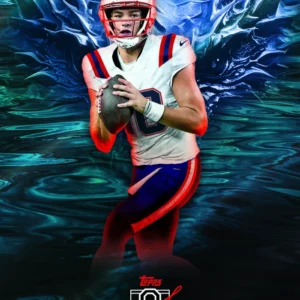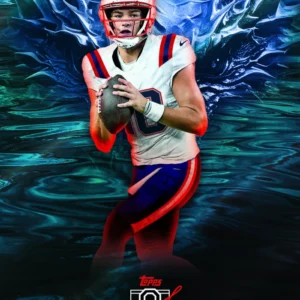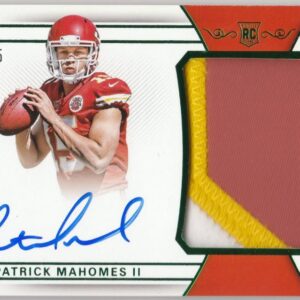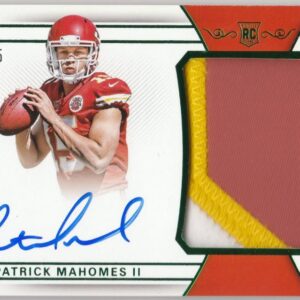As the unmistakable crack of the bat signals the glorious return of baseball season, a wholly different kind of crackle is being heard in the world of sports memorabilia. The 2025 Topps Baseball Series 1 has debuted with remarkable fanfare, particularly due to its delectably whimsical Big Head Variation inserts. This zany yet aesthetically striking collection of caricature-style cards has collectors reaching for their wallets faster than a Trea Turner sprint to first base.
For the uninitiated, these Big Head Variations are not just any cards; they are an homage to the playful spirit of America’s favorite pastime. Famed for their excessively large-headed renditions of baseball titans, they are a creative deviation from the straight-laced norm that appeals to collectors’ desire for novelty. But make no mistake—there’s serious business in these cards’ whimsicality.
Starring in this animé-esque festivity are household names like Shohei Ohtani, Aaron Judge, Elly De La Cruz, and Bobby Witt Jr. Joining them are rookie sensations Dylan Crews and James Wood, whose larger-than-life portraitures intrigue seasoned fans and novices alike. The buzz has reached fever pitch as these collectibles debut against the backdrop of the new season.
Leading the charge into the annals of novelty-card fame is Shohei Ohtani, whose Big Head Variations have scorched the secondary market with sales values hotter than a midsummer double-header. Claiming five out of the ten highest-priced sales for these cards, Ohtani’s surreal graphics range from a solid $760 to a hefty $950, perhaps hinting at the near-deity status collectors place upon the two-way superstar. His most coveted card, scantily numbered to just 25, has already breached the highest echelons of the trading market, a sensation only Shohei could conjure.
Not to be outdone in the limelight is the stalwart Aaron Judge, whose dynamic start this season has only fueled the fire for his scouting. His effigy on cardboard reaped a princely sum of $609 on March 31st, a testament to the enduring magnetism that emanates from his towering presence both on and off the field.
Let us not overlook the impact of newcomer Paul Skenes’ Big Head debut, which fittingly features the All-Star Rookie Cup. His initial /50 edition saw an impressive upward swing with a first sale at $525, and with only a day’s lapse, a follow-up exchange tipped the scales at $808. The narrative is straightforward: scarcity breeds desire, and Skenes’ name is one to watch.
The tale of Bobby Witt Jr. unfolds similarly, with a hyper-rare Big Head Variation, limited to five, fetching $800 with ease on March 28. Witt Jr. epitomizes the scarcity principle that drives collectors into an unwavering frenzy; indeed, even a whisper of rarity is enough to spur action in this competitive domain.
The collective fervor for these Big Head Variations cannot be overstated. Card Ladder, a revered compass in the sportscard world, chronicled 51 transactions within merely the first week of these splendiferous releases. Sales oscillated from the much more attainable $45 presence of Dylan Crews to the Heights of the $1,000 Mike Trout bonanza—guardians and modern enthusiasts, lay your collections bare! It’s clear that the appeal of these cards transcends mere financial speculation, offering buyers a slice of pop-art magic within the mundane beauty of baseball.
So what is it about these Big Head Variations that has enthusiasts diving headfirst into the frenzy? Perhaps it’s the audacity of Topps to break molds, breathing fresh air into what could otherwise be a straightforward collector’s affair. Or perhaps it’s the serendipitous fusion of artistry and athleticism, in a time-honored hobby crying out for a splash of raw creativity. These larger-than-life illustrations have endeared themselves to collectors through a blend of Canadarm-style influence and the riveting unpredictability of this year’s season opener.
Regardless of the reasons, there is no denying that the 2025 Topps Series 1 Big Head Variations are carving their niche in the emotional pockets of collectors and investors alike. This card niche serves as a Raymond Loewy-revered “Most Advanced, Yet Acceptable” design—a paragon of innovation meeting tradition in America’s great leisure pursuit.
As the wah-wah of yet another stadium organ fades, any impertinent doubt as to the appeal of these caricatured commodities must surely follow suit. We sit at the precipice of what is shaping up to be a quixotic chapter in card collecting lore where caricature meets currency—a conundrum clad in glossy cardboard. Long may these oversized domes reign supreme, for wherever they pop up, delight soon follows.





